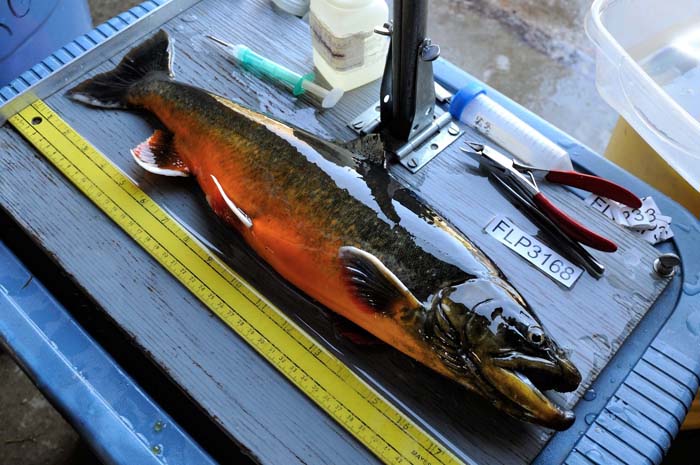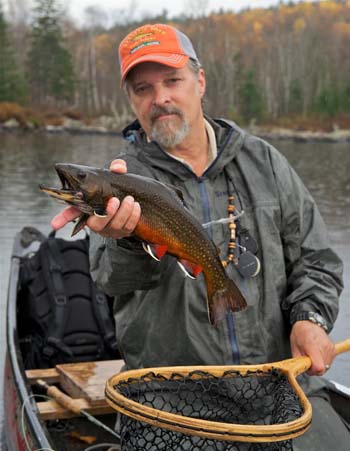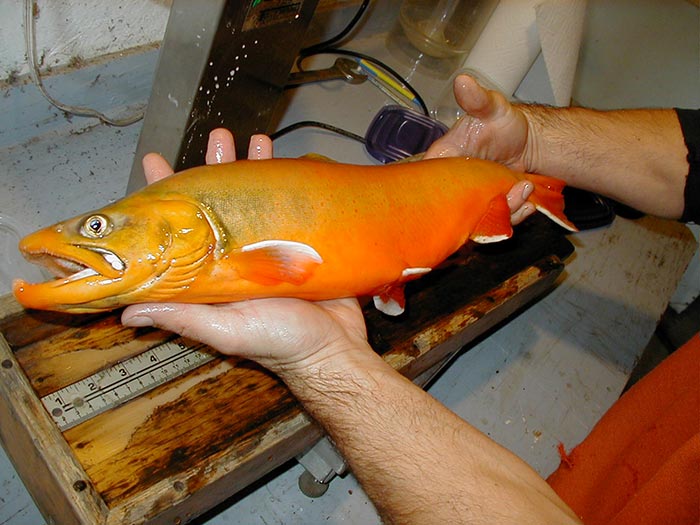
A Floods Pond Arctic char, a Salmonidae [Salvelinus alpinus] gets the once over from the University of Maine biologist.
Relics of the Ice Age fight for survival in their only remaining hideaways in the lower 48, Maine’s famous ponds
By Skip Clement

Bob Mallard with a Maine pond brookie. Mallard is on the board of Native Fish Coalition. Mallard is Maine’s premier guide, conservationist, author, and voice of protecting public lands and fishing, inland wild fish, and their habitats. Check out Bob’s website.
[dropcap]W[/dropcap]hen 20 years later you can remember every freshwater fish you caught [four] in the 10- to 15-pound class and recall their willingness to take you on with a fervor still unfamiliar, then get to hold them and be awed by beauty only matched by brook trout, you caught the Salmonidae arctic char [Salvelinus alpinus].
Salvelinus alpinus is the most northerly of all freshwater fish and circumpolar in distribution, occurring around the globe from Maine, northward across northern Canada, Alaska and the Aleutian Islands, and from northern Russia south to Lake Baikal and Kamchatka as well as in Iceland, Great Britain, Scandinavia, the Alps, and Spitsbergen, among other places.
It is naturally an anadromous species, except where it has become landlocked, as is the case in Maine’s lakes. The Arctic char has light-colored spots on the body, and the leading edges of all the fins on the lower part of the body are milk-white. These features set the chars apart from the salmons and trouts. Dolly Varden (Salvelinus malma) is also a char and looks “exactly” like an Arctic Char. See spawning colors image below.

A male Arctic char in its full spawning colors is something to behold. Photos credit Maine Dept. of Inland Fisheries and Wildlife.
The current International Game Fish Association – All-Tackle record for Arctic char is 30-pounds, 8-oz. [September 2000] caught in Nunavut, Canada [formerly Northwest Territories]. The fly rod record is from the same coordinate, but 21-pounds, 8-oz. caught on 20-pound tippet [August 2014]. Maine’s landlocked contribution is 5-pounds, 2-oz.
Source: Video provided by Bob Mallard, Native Fish Coalition.

